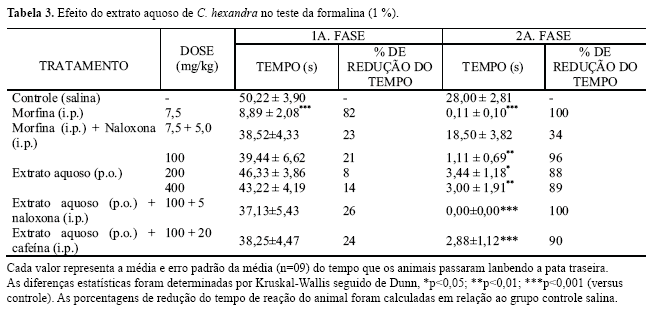The aqueous extract of Coutarea hexandra Shum. (Rubiaceae) is extensively used on local folk medicine as anti-inflammatory and antinociceptive. In view of these facts, it was of our interest to evaluate the anti-inflammatory and antinociceptive activities. Its acute toxicity was also evaluated. The aqueous extract of Coutarea hexandra reduced acetic acid-induced writhing, increased the latency in the hot plate test, and reduced the second phase nociceptive response in the formalin test. Neither naloxone nor caffeine reversed aqueous extract of Coutarea hexandra effect in the second phase of the formalin test. The aqueous extract of Coutarea hexandra also reduced the rat paw edema induced by carrageenan. There was no animal death with doses up to 5 g/kg in the acute toxicity assays. These results showed that aqueous extract of C. hexandra has low acute toxicity, as well as, anti-inflammatory and antinociceptive effects, substantiating its popular usage. The antinociceptive effect seems to involve a central component, although it is not directly related to the opioid and adenosine systems.
Coutarea hexandra; Rubiaceae; quina-quina; antiinflammatory activity; analgesic activity




